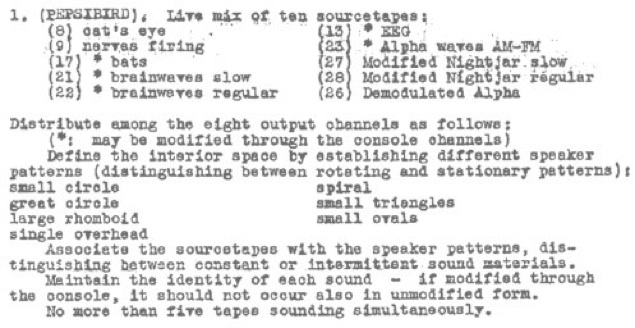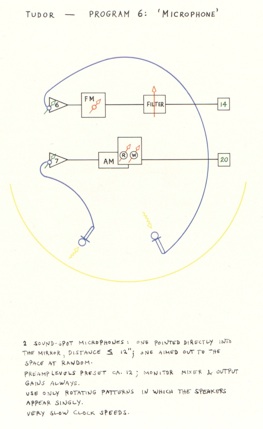Pepsibird is an 18 minutes long soundscape made for the Pepsi Pavillion in Osaka. It features sounds resembling typical outdoor atmospherics like birds chirping and wind blowing. These sounds however are generated from the following nine different recordings of neural activity and similar sources:
- A cat’s eye
- A nerve firing
- Bats
- Brainwaves (slow / regular)
- EKG
- Alpha waves AM-FM
- Modified nightjar (slow)
- Modified nightjar (regular)
- Demodulated Alpha waves
To accomplish the result show above. A sound processor by Gordon Mumma has been used to heavily manipulate the source recordings. Below is an image of how David Tudor intended to use the sounds.

Similarly to “Pepsibird”, “Microphone” was also made for the Pepsi Pavilion in Osaka. The tracks are however much more abstract being described by David Tudor himself as “sounding like primordial beasts”. Although still relying on Microphones and Gordon Mumma’s sound processor, instead of using pre-recorded source material Tudor decided to make use of a feedback loop. This feedback loop is powered by tow shotgun microphones and an ambisonics-like distribution of 37 in the dome of the pavilion. The image below shows how Tudor accomplished the feedback loop.

Sources:
https://composers-inside-electronics.net/dtudor/legacy/pepsibird.html
https://composers-inside-electronics.net/dtudor/legacy/microphone.html
+ references shown in the post